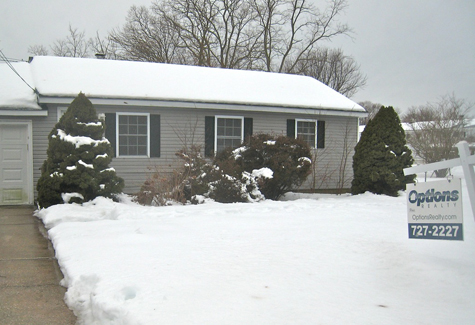Real Estate: North Fork foreclosures are few and far between

The North Fork has been relatively immune to the profound turmoil in residential real estate over the last few years, particularly the loss of homes through foreclosure, and local experts say there are several explanations.
“This is a conservative, stable, family-oriented second home market,” said Nicholas Planamento, a senior vice president with Town & Country Real Estate in Mattituck. “Second homes are more cumbersome to finance and generally haven’t lent themselves to the kind of irresponsible lending we saw over the last few years.”
Mr. Planamento also observes that the North Fork has not attracted investors to the same degree as the South Fork.
“This isn’t to say there are no foreclosures, but the percentage has been very small compared with the South Fork, where investors may have overextended themselves,” he said. “There was also a bit of speculation on Shelter Island that came to a rather abrupt end just as the U.S. market went into a tailspin.”
Kevin Santacroce, executive vice president at Bridgehampton National Bank, agrees that the North Fork’s relative affluence and financial stability are substantial contributing factors.
“This is not like Nevada and Florida, where a huge percentage of homeowners are under water,” he said. “There are around 3,000 homes in trouble in Suffolk County, but most of these are concentrated in mid-Suffolk. We are buffered but we’re not completely isolated, however.”
In that regard, Mr. Planamento points out that the Multiple Listing Service of Long Island currently lists six real estate-owned (REO) properties on the North Fork. (An REO property is owned by the lender.)
“They’re all around or under $300,000, which makes them the lower end of the market and probably not second homes,” he said. But Mr. Planamento believes there may be up to 70 homes on the North Fork that are in trouble, but are yet to experience any legal action.
“On the North Fork everyone knows each other so people are reluctant to reveal they’re in trouble,” he said. “But I personally know of one homeowner with two homes who is upside down on both of them so I suspect there might even be more.”
There may be another reason our area is not seeing much foreclosure action. In October 2010, New York State chief Judge Jonathan Lippman set out strict rules for foreclosure filing that require the lender’s attorneys to affirm that the claims are all true because they personally checked them.
The net result, according to The New York Law Journal, has been a steep drop in foreclosure filings.
Shelter Island attorney Abigail Field writes extensively on real estate legal matters and detailed in an article published last December on www.dailyfinance.com that three Suffolk County judges had confirmed the withdrawal of hundreds of Suffolk County foreclosure filings as a result of the Lippman ruling.
Ms. Field was also told by several attorneys that foreclosure filings were expected to be at a standstill for several months until banks and their attorneys worked out a way to comply with the ruling.
Though she does not claim to be an expert on the North Fork market, Ms. Field says she believes foreclosures are unlikely to become a huge problem when legal actions resume.
“There was never a massive amount of building on the North Fork and the area has a lot of property that is not encumbered by a mortgage,” she said. “Many North Fork loans weren’t securitized, making the bank much more likely to modify a loan that it is holding,” she observed.
Mr. Santacroce agrees that the historical lack of speculative construction on the North Fork has worked in its favor. He says there may also be complicated political reasons not to flood the market with foreclosure actions.
“They’re certainly not assigning a massive number of judges to handle foreclosures so now it’s becoming a 24-month rather than a two-month process,” he said.
With foreclosures so scarce in our area, no one was more surprised than Paul and Joan Simon when they ended up purchasing a foreclosed home in Southold about eight months ago.
“We weren’t shopping for a foreclosure, but we noticed this one house whose price had dropped dramatically and it turned out to be foreclosed,” said Mr. Simon.
Although they were initially reluctant to look at it, they say they were pleasantly surprised at the home’s good condition and decided to make an offer.
“It took about four or five weeks from offer to closing, so it was quick,” said Mr. Simon.
“The bank was not easy to negotiate with, though, and that was the stressful part,” he added. “It was an out-of-town bank and they tried to give us the impression there were multiple offers on the house when there really weren’t. For anyone thinking about pursuing a foreclosure, I would say it’s far easier to negotiate a sale with a private party than with a bank.”







